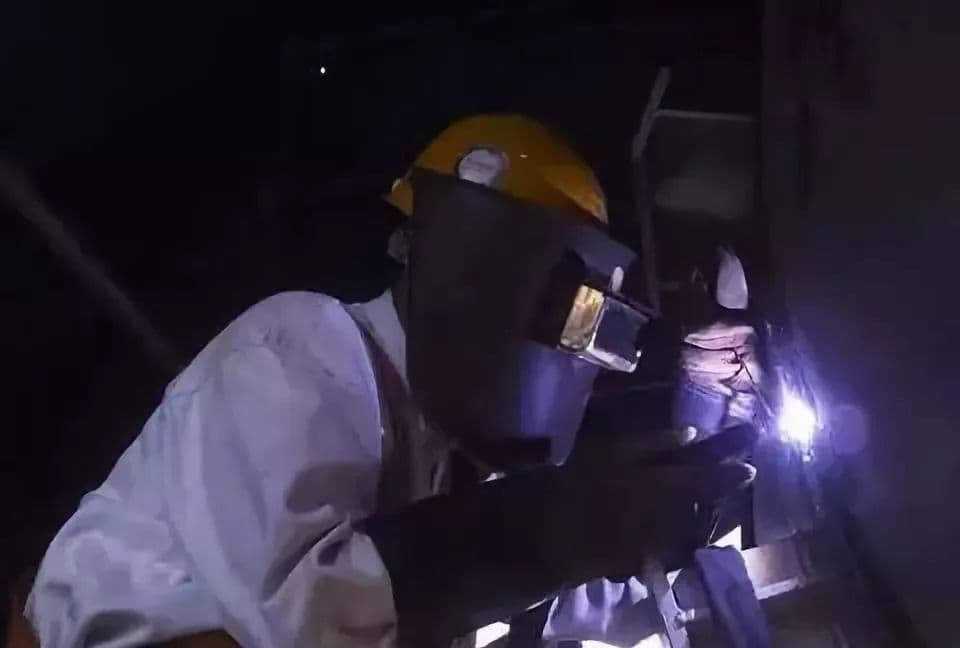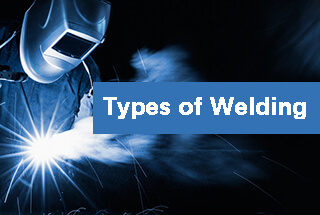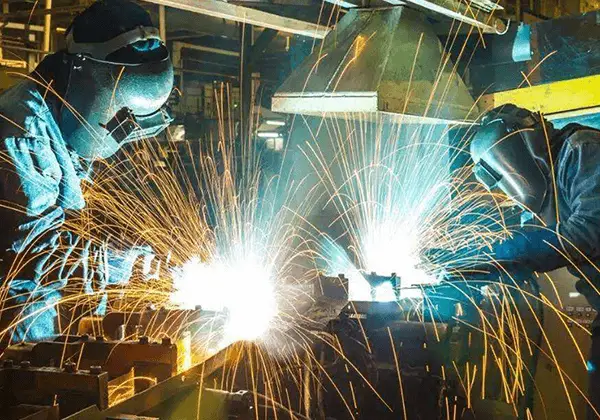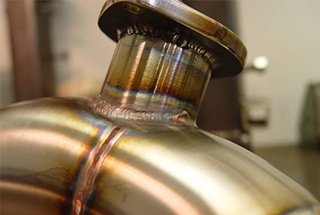The welding quality directly affects the performance and safety of the boiler structure.
If the welding quality of the boiler is not good, leakage and even explosion accidents may occur, causing heavy losses to people’s lives and property.
Therefore, it is of great significance to discuss the causes of boiler welding defects and improve the welding quality of the boiler to ensure safe operation of the boiler.

Incomplete penetration
Cause analysis
The main causes of incomplete penetration defects are as follows:
① Membrane water wall pipes are butt installed at the construction site.
Due to narrow gap and obstacle operation, it is very easy to have incomplete penetration.
② The assembly clearance is inconsistent.
When assembling pieces on the site, it is necessary to assemble multiple welded junctions at the same time.
However, it is very difficult to make the assembly clearance the same.
In addition, multiple welded junctions cannot be welded at the same time.
When some welded junctions are welded, the gap between the remaining welded junctions will be reduced or even zero.
These welded junctions are prone to incomplete penetration during welding.
③ Incomplete penetration is caused by the obstruction of pipes on both sides and the staggered joint of strong assembly during welding.
Preventive countermeasures
Measures to prevent incomplete penetration:
The size of joint groove shall be controlled.
For example, for the joint welded on one side and formed on both sides, the assembly clearance shall be the electrode diameter, and the blunt edge shall be about half of the electrode diameter;
The root shall be carefully removed;
Proper welding speed and welding current shall be selected during welding; Use short arc welding, etc.
Start the arc from the most difficult part and seal the arc at the place with the least obstacle to avoid affecting the operation and welder’s vision during welding and reducing the quality of welded joints;
To avoid too low temperature of welded joints, it is better to adopt butt welding by two persons;
It is difficult to keep the specified included angle between the nozzle, welding wire and the weldment at the obstacle position, which can be adjusted according to the actual situation.
After the difficult position, the normal angle welding can be resumed.
For example, for membrane water wall:
① Before assembly, carefully check the flatness of the welded junction.
For minor deformation, flame correction or mechanical method can be used for correction before assembly;
If the deformation is too large and the overall correction is difficult, the connecting weld between fins can be cut first.
The cutting length is determined according to the degree of deformation and the size of stress, generally not more than 1500 mm, and then the single tube is corrected.
After the assembly and welding of the whole water-cooled wall is completed, the cut fin weld shall be welded again by using the sectional back welding method.
② Strictly control the minimum and maximum gaps of multiple welded junction pairs, so that the gap of the smallest pair can meet the welding quality requirements;
The maximum assembly clearance shall not exceed 5mm.
During welding, the welded junction with small gap shall be welded first, and then the welded junction with large gap shall be welded.
This can not only avoid incomplete penetration, but also help reduce welding stress and deformation, and reduce the waste of welded junction.
③ When welding to the fin, due to the limitation of pipe spacing, it is better to use tungsten electrode with sharp end grinding for welding to increase the accessibility of welding gun, and properly reduce the welding speed, increase the residence time of the arc here, and move forward when the size of the molten pool is equal to other parts and the molten metal is in the “infiltration” state.
④ If the gap between the welded junctions of each piece is too small to ensure the welding quality, tungsten electrodes with sharp ends can be used for welding to centralize the arc and facilitate the penetration of the weld root.
Unfused
Cause analysis
When welding, the current is too small or the welding speed is too fast, and the heat is not enough, so that the base metal groove or the weld metal that was welded first is not fully melted;
The selected current is too high, which makes the second half of the electrode red and causes melting too fast.
The molten metal of the electrode has been covered before the base metal edge reaches melting;
The heat dissipation rate of the weldment is too fast, or the temperature at the starting point is low, so that the starting end of the base metal is not melted, resulting in incomplete fusion;
The flame of welding rod, welding wire or welding torch leans to one side of the groove, or the arc leans to one side due to the eccentricity of welding rod, so that the base metal or the previous weld metal is covered by filler metal before being fully melted;
When there is rust or dirt on the base metal groove or the surface of the weld metal of the previous layer, the filler metal cannot be melted due to insufficient temperature during welding, and the edge and interlayer are not fused.
During the installation of heating surface tubes of power plant boilers, arc stoppage occurred during the welding of the same weld, which resulted in more “cold joints”, especially “cold joints” of large-diameter tubes, and also caused non fusion between layers.
Preventive countermeasures
The angle of electrode and welding torch shall be reasonable, the swing of electrode shall be appropriate, and the melting on both sides of the groove shall be observed;
Slightly higher welding current and flame energy rate shall be selected, and the welding speed shall not be too fast to increase the energy enough to melt the base metal or the weld metal of the previous layer;
If the electrode is eccentric during welding, the angle shall be adjusted in time to make the arc in the correct direction;
Carefully clean the dirt on the groove and weld;
After the inspection of the root layer weld with hydrogen arc welding primer, the welding of the secondary layer weld shall be carried out in time;
In order to avoid “cold joint”, the length of welding wire shall be planned, and the welding wire shall not be replaced during welding.
In order to avoid wire jitter, the distance between the wire grip and the end of the wire should not be too long, and it is recommended to adopt the method of “hot joint” without arc stopping.
This method is to first contact the end of the welding wire with the weld pool when a joint occurs due to the need to change the position of the wire grip.
At the same time, move the arc back slightly, or lead it to the side of the groove.
When the weld pool solidifies and the end of the welding wire stick together, quickly change the position of the wire grip.
After this action is completed, immediately restore the arc to its original position and continue welding.
The “hot joint” method can not only ensure the welding quality, but also improve the work efficiency.
Stoma
Cause analysis
There are many factors that cause stomata.
When the pre welding preparations at the construction site are sufficiently qualified, the following requirements have been strictly met:
① Strictly observe welding parameters and keep them stable;
② The polarity and type of current have little influence;
③ The groove of weldment shall meet the requirements and be cleaned up. The low hydrogen type welding rod used shall be strictly baked and placed in the insulation cylinder, and shall be taken when used;
④ Strong quality awareness of welders;
⑤ Have strict wind and rain protection measures;
⑥ When the X-ray inspection results show that the porosity is not caused by hydrogen arc welding, the porosity is often caused by improper arc starting and arc stopping.
Preventive countermeasures
The control measures mainly include:
① Carefully clean the oil, rust, paint and other dirt within the range of 15~20mm on both sides of the groove surface and the surface of the welding wire until all the metal luster is exposed. During argon arc welding, wipe it with acetone;
② The welding rods shall be dried in strict accordance with the regulations, and placed in the special insulation cylinder for welding rods after heat preservation, and shall be taken when used;
③ Welding is not suitable when the ventilation is large;
④ The heat input of the base metal increases and the cooling rate of the molten pool slows down when the arc starting current is properly increased;
⑤ When striking the arc, strike the arc at a distance along the joint, and then pull it back to the joint, making the gas escape time longer;
⑥ During argon arc welding, once honeycomb pores appear for some reason, stop welding immediately and grind with a grinder.
It is prohibited to eliminate air holes by arc remelting.
The honeycomb pores are usually caused by the failure of argon protection for some reason, such as the temporary failure of the air supply system).
At this time, the surface of the pores is oxide film. Arc remelting not only makes the weld brittle, but also can not eliminate the pores;
⑦ When argon arc welding pipes with large specifications, pay attention to whether the water-cooled welding torque used is reliable, because the water-cooled welding torque is prone to air holes due to failure;
⑧ Argon with high purity (greater than 99.99%) shall be used, the flow shall be moderate, and the inner wall of the nozzle must be clean.

Crackle
Cause analysis
Welding cracks may occur during welding, or after welding or even after a certain period of time.
The main causes of welding cracks are as follows:
① When the carbon content or sulfur and phosphorus content of the base metal is too high, its weldability becomes poor and cracks are easy to occur.
② The higher the content of alloy elements and sulfur and phosphorus in welding materials such as electrodes and fluxes, the greater the tendency of cracking.
③ Welding at low temperature or with wind will lead to cracks if the cooling speed of the weld is too fast.
④ The welded thick plate is also easy to crack due to its large structural rigidity.
Prevention and control measures
Cracks are the most dangerous and impermissible defects of welded structures.
Their occurrence can be controlled from the following aspects:
① The tack weld shall be thick and long enough;
② No strong assembly is allowed;
③ Do not knock the weld with force;
④ The welding process of dissimilar steel shall be determined according to the physical properties, chemical properties and weldability of the two materials.
For example, when welding hot steel and stainless steel, due to their different thermal expansion coefficients, the arc should stay longer on the side with fast heat dissipation;
⑤ When welding alloy steel, try to use equipment with arc striking device for welding, on the one hand, reduce hardening, on the other hand, reduce the possibility of tungsten inclusion.


